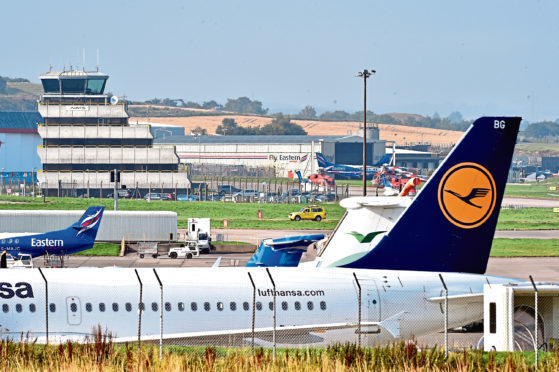Plans to delay cutting Air Passenger Duty (APD) have been described as a “bitter blow” for Aberdeen.
Fears were last night raised that further delays will hamper Aberdeen International Airport’s ability to attract new flights.
And last night, airport owners AGS Airports, condemned the Scottish Government’s failure to introduce the policy, claiming it had already resulted in Aberdeen losing flights to London Gatwick and London City.
Replacing APD with a devolved Air Departure Tax (ADT) has been a flagship Scottish Government economic commitment for several years.
The government has argued that replacing APD would enable ministers to cut ADT by 50% before abolishing the tax altogether when resources allowed, and proposed the policy would boost international connectivity and allow new routes to be established.
>> Keep up to date with the latest news with The P&J newsletter
But in a reply to a written Holyrood Question, Public Finance Minister Kate Forbes yesterday confirmed the plans had been deferred until after April 2020 and failed to give date for their introduction.
Originally it had been hoped to replace APD in April 2018 but that deadline had already been delayed by at least a year.
Ms Forbes blamed Brexit and a failure to work out how the current exemption that allows travellers departing from airports in the Highlands and Islands to be exempt from the tax can be retained under any new arrangement.
Last night Derek Provan, chief executive of AGS Airports Ltd which owns Aberdeen International Airport, accused the government of allowing tourism to “suffer”.
He said: “This was a cast-iron manifesto commitment and they have now failed to implement it two years in a row. In the meantime it is Scottish tourism and connectivity that is suffering, as we’ve seen with Norwegian pulling out of Edinburgh and lost routes at both Glasgow and Aberdeen.”
Aberdeen Donside MSP Mark McDonald said it was not good enough to kick the issue into the long grass.
“This further delay to any introduction of an Air Duty Tax, and the promised reduction, is a bitter blow to the efforts of Aberdeen Airport to position itself competitively in its bid to attract and retain routes,” he said.
“We have seen two important London routes lost in recent months, with the cost of air passenger duty being directly referenced as a contributory factor. The issues around the Highlands and Islands exemption need to be resolved urgently to enable this impasse to be broken.”
The delay was announced as members of Unite the union at Aberdeen Airport voted for strike action over a pay claim for 2019 and in protest at proposals to close the final salary pension scheme.
Talks are ongoing, but the walk-out is planned to hit peak holiday times in May, June and July.
Ms Forbes said: “The Scottish Government has a longstanding commitment to reduce ADT by 50%, and we are doing all we can to work with airlines and airports to help grow the direct routes which are important for our tourism sector and Scottish businesses. While we work towards a resolution to the Highlands and Islands exemption, we continue to call on the UK Government to reduce APD rates to support connectivity and economic growth in Scotland and across the UK.”
A HIAL spokesman said: “The exemption is vital for HIAL airports, including Inverness. Its existence ensures sustainable and viable connectivity and regional competitiveness. Any solution must see the remote region exemption maintained whilst promoting growth elsewhere.”

